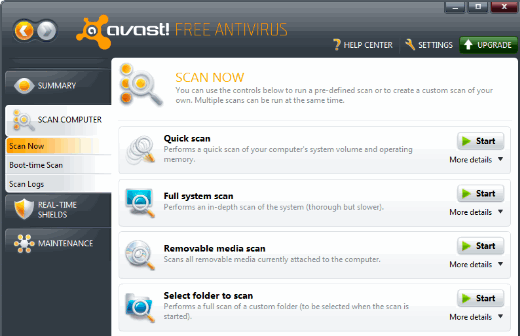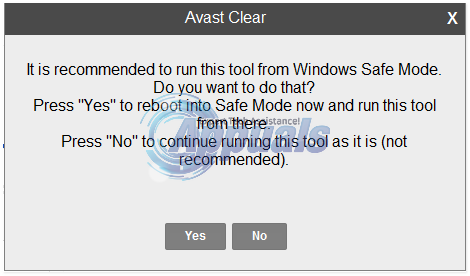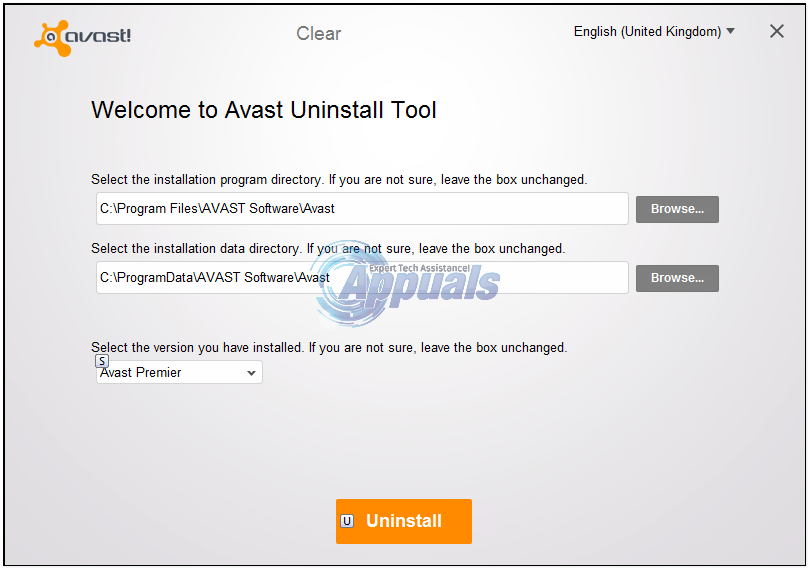The correct procedure is to uninstall Avast from the program and features window. This launches the Avast uninstaller which then proceeds with the uninstallation. However, uninstalling an antivirus is not as simple as uninstalling any other app. Antivirus files are protected by digital signatures that allow only the ‘trusted installer’ (in this case Avast) to edit them. During the uninstall procedure, you will have to provide the signatures in order to complete the uninstallation. Avast installs a mock operating system in order to complete the uninstallation. It will then force the user to reboot the computer in safe mode. Since Avast was the last operating system to install, it becomes the default OS. When the computer restarts, the Avast OS loads and opens windows in safe mode. Avast then proceed to completely uninstall, leaving behind the uninstaller and the registry keys and a few files. Though your antivirus will no longer work, you will need to complete the uninstallation by removing residual files.
Avast has mostly uninstalled from the system, but it has left some files behind. Users have complained that these files seem to still make the antivirus active. Pop-ups of the antivirus can still be seen asking for upgrades and this annoys the users that thought that they had completed the uninstallation of Avast antivirus. How can one get rid of all the antivirus residual files once and for all? We will give you some of the known ways in which you can complete the uninstallation of the antivirus and get rid of the pop-ups.
4 Ways to Remove and Uninstall Avast Completely
1. Remove Avast as the default operating system and delete the Temporary Avast OS
During uninstalling, Avast creates a small operating system that it uses to uninstall files. After it is done, the operating system does not seem to uninstall itself after you restart your computer. The reason behind this is that you cannot uninstall the default operating system. You might notice the Avast OS option when starting your computer. Leaving it as the default OS might keep booting your computer into the safe mode every time you restart it. This option will let you switch your default operating system back to Windows. This will then allow the Avast antivirus to uninstall its residual files after you are done. You can also set the default operating system by pressing esc or F10 or F12 (depending on your computer) during startup. This gives you the list of all installed operating systems and the option of setting the default OS. You can find the Avast uninstall utility if yours does not work correctly.
2. Use Avast Clear
Avastclear is an intuitive tool from the creators of Avast itself that is designed specifically to uninstall any and all Avast products installed on a computer. Click here to download Avastclear. It will automatically prompt you to run the tool in Safe Mode. Run the executable Avastclear.
Follow the onscreen instructions and browse to the folder in which you have installed the Avast product you want to uninstall. (If you’ve not used a custom folder, then leave it to defaults). Click on Remove. Restart your computer, and Avastclear will finalize the uninstallation when your computer boots up.
Once you have no more use for Avastclear, you can uninstall it from your computer.
3. Use the ESET Antivirus Remover tool
If Avastclear fails to successfully uninstall Avast from your computer (which is quite unlikely) or if you simply don’t want to use Avastclear, you can use the ESET Antivirus Remover tool instead. The ESET Antivirus Remover tool is designed to be able to uninstall almost every single antivirus or anti-malware program out there, and that includes all Avast programs. Go here and download an appropriate version (32-bit or 64-bit) of the ESET Antivirus Remover Install and run the utility. Click on Continue and allow the ESET Antivirus Remover tool to scan your computer for all previously installed security programs. When provided with the results of the scan, select all of the Avast applications that you want to be removed from your computer and click on Remove. Confirm the action by clicking on Remove in the warning window that pops up. Wait until the tool displays a message stating “Applications successfully removed”. At this point, the applications you selected will have been removed and you can close down the utility. Once you have uninstalled Avast from your computer, you can go ahead and uninstall the ESET Antivirus Remover Note: You may need to restart your computer during or after the uninstallation process. To make sure that whatever method you used actually managed to completely uninstall Avast from your computer, simply go to Start > Control Panel > Add or Remove Programs (Windows XP, Vista or 7), Control Panel > Programs and features (Windows 8 and 8.1) or Control Panel > Programs > Programs and features (Windows 10) and make sure that there aren’t any Avast programs left in the list.
4. Delete trusted installer files manually
If method 1 does not clear the Avast pop-ups, you will need to delete the Avast files manually. This method will allow you to take control of trusted installer files and the ability to delete those files It is not recommended to take ownership of trusted owner files, but if you are sure you are not going to use them again, you can just delete them. Use this as a last resort method.
How to Completely Remove Windows 7 and Install Ubuntu?How to: Completely Remove Office 2011 From MacHow to Completely Uninstall Microsoft Teams on Windows 10?How to Completely Uninstall Windows Essentials 2012


